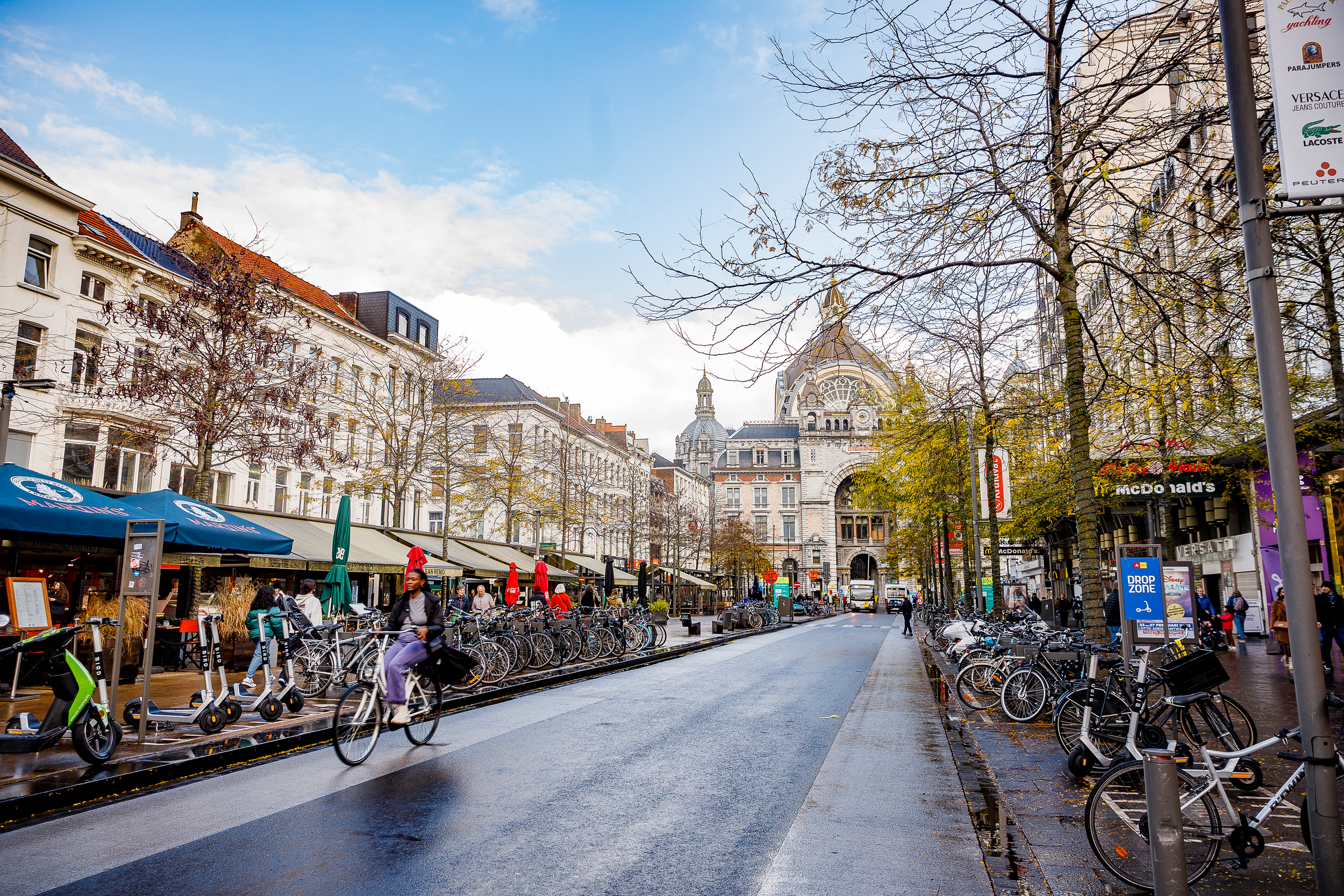How Tangible Guidelines Promote Active Travel towards Events in Antwerp
Antwerp Central Station. Copyright: Victoriano Moreno
Silke Lamoen from the city of Antwerp is responsible for promoting active travel towards events in the city. A tool that she recently launched is a set of tangible guidelines to help event organisers. The guidelines help them to quickly check what actions they should undertake to create a sustainable and accessible event. She explains why this tool was created.
Access the Antwerp Guidelines via the links below!
➵ What inspired you to develop a guideline for promoting active mobility towards events in Antwerp, and how does it differ from existing guidelines in other cities?
“Event organisers must consider an enormous number of rules and measures, from safety to sustainability and accessibility. Because each event is different, in location or in size for example, it is difficult to have the same set of clear rules for every event. The guidelines that we published only differentiate in four types of events and give straightforward must-do’s and could-dos. All the actions have clear deadlines and links where organizers can find extra guidance. Compared to other guidelines (in other cities) it is way more slimmed down and hands on.”
➵ How do you ensure that event organizers are aware of the guideline and incorporate its principles into their event planning?
“The event team of the city of Antwerp communicates the guidelines during the application process. In addition, for the bigger events, the mobility team plans a kick-off meeting months before the actual event to go over the guidelines and see where they can make an extra effort. Sometimes, the city will also help to roll out certain actions or mediate between all stakeholders.”
➵ Can you give an example of an event in Antwerp that successfully implemented the guideline and what positive impact it had on mobility and the city as a whole?
Sinksenfoor Annual Fair. Copyright: Sigrid Spinnox
“The Sinksenfoor, an annual fair, checked their mobility plans to the guidelines and adapted them accordingly. In comparison to the previous year, the event made their temporary bike parking larger and assured one parking at every entry of the event site. The fair holders gave away free tickets to ride attractions to visitors who correctly parked their bikes at the bike parking.”
“Because of these extra actions, the city of Antwerp mobilised her parking attendants that surveyed the surrounding residential areas. They put flyers under the windshields of cars to promote the bike parking and public transport towards the event.”
➵ Have you faced any challenges in promoting walking and cycling to events in Antwerp, and if so, how have you addressed them?
“The biggest challenge for walking right now is that temporary signage is not provided by the city anymore. Temporary signage isn’t easy to organize to begin with: it takes a lot of time and isn’t budget friendly nor sustainable. We are currently using our digital signage for biking and parking as much as possible for event info and directions.”
“For biking we notice that it isn’t easy to install a temporary bike parking at every entry. Not every location has enough public space to put up a large parking right next to the event. That’s the reason we promote the underground bike parking with camera surveillance in the centre more and more. We are also building several new ones in the next couple of years.”
➵ How do you measure the success of the guideline and the impact it has had on mobility and the city's sustainability goals?
Tall Ships Races. Copyright: Jonathan Ramael
“Every year we measure the modal split of several events. This helps us to follow-up on the type of events and event locations that struggle the most with reaching a sustainable modal split. During and right after the covid pandemic, we saw events with more than 50% visitors traveling by car. Fortunately, this was a temporary phenomenon and for the latest events measured, car travel is definitely down at for example the Antwerp 10 Miles (19.7% car travel), Sinksenfoor (26.8% car travel) and Tall Ships Races (26.3% car travel).”
➵ What are your future plans for the guideline and promoting walking and cycling to events in Antwerp, and how do they fit into the broader vision for sustainable mobility in the city?
”Since the guidelines have only been launched recently, we are following up with all colleagues involved to spread awareness and to refine the guidelines if necessary. In the end, the set of guidelines reflects the city’s vision on active and sustainable mobility but translated to clear actions and KPI’s. That’s the easiest way to communicate and follow up on this broader vision with all stakeholders.”
Author: Silke Lamoen (City of Antwerp)



